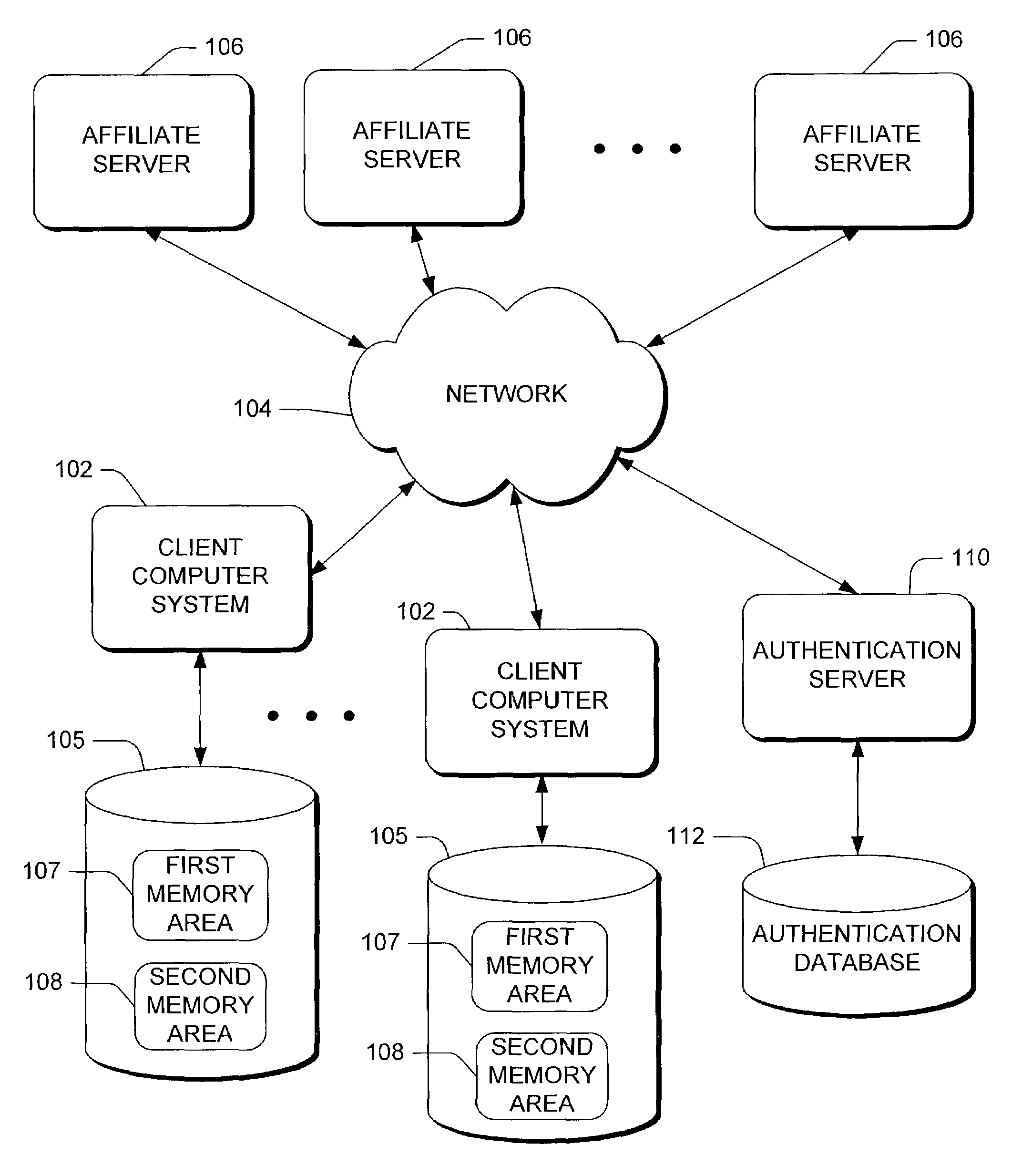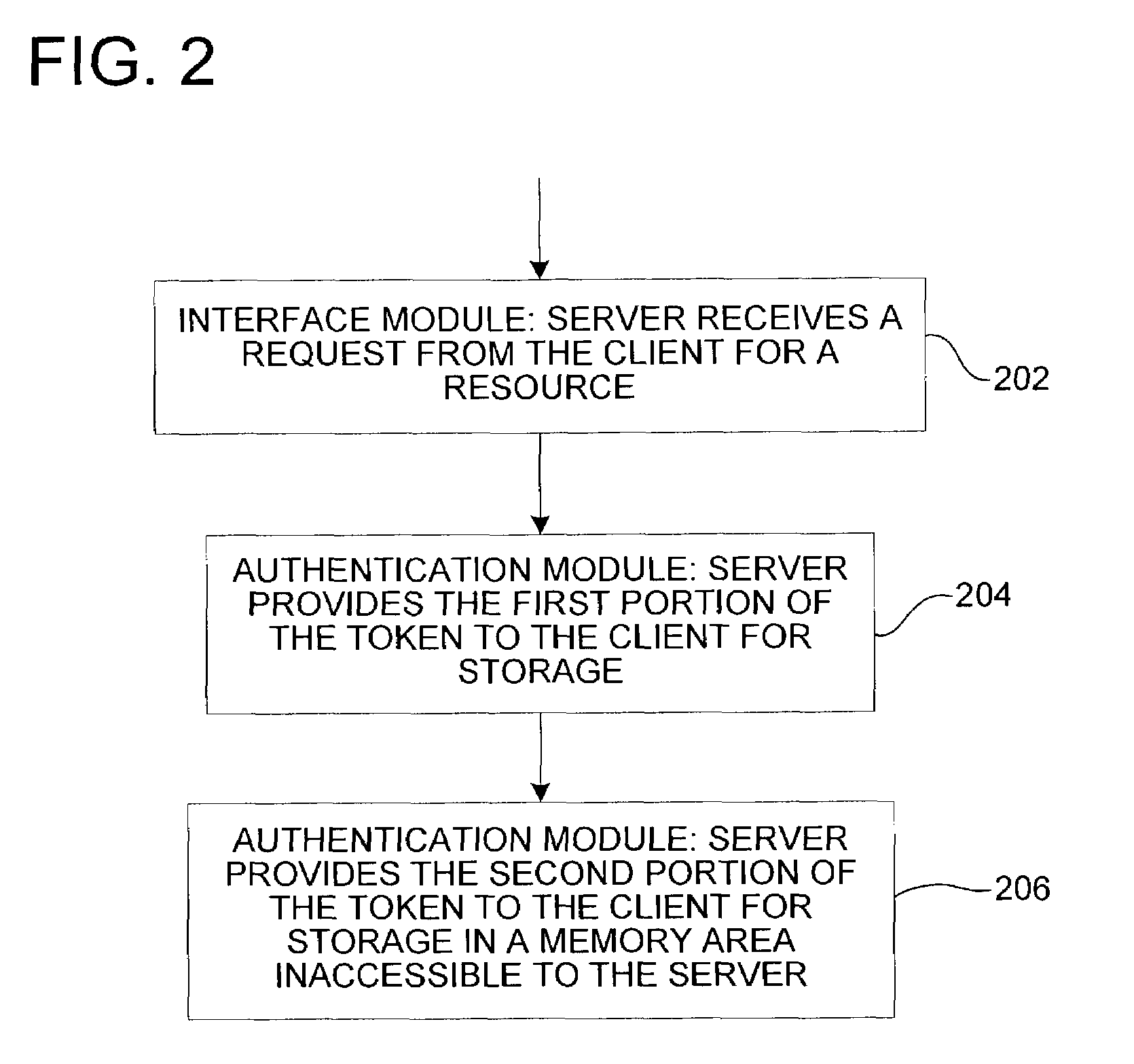Combining a browser cache and cookies to improve the security of token-based authentication protocols
a technology of token-based authentication and browser cache, applied in the field of authentication, can solve the problems of different security risks and failure of authentication, and achieve the effect of improving the security of protocols and overall security of authentication tokens
- Summary
- Abstract
- Description
- Claims
- Application Information
AI Technical Summary
Benefits of technology
Problems solved by technology
Method used
Image
Examples
Embodiment Construction
[0027]An authenticator includes an opaque token used in protocols for identifying one of the parties in a multi-party communication session such as a client-server communication. One of the parties (e.g., the server) issues the token, and the other party (e.g., the client) replays the token whenever proof of identity is needed. The security of protocols (e.g., web-based) that depend on replaying authenticators may be improved by storing a portion of the authenticator in a memory area or other storage area having improved security features. According to one embodiment, the invention includes an authenticator such as an authentication token or ticket having at least two portions. The server provides a first portion of the authentication token to the client for storage in a first memory area associated with the client (see FIG. 1). The server provides a second portion of the authentication token to the client for storage in a second memory area associated with the client. Information i...
PUM
 Login to View More
Login to View More Abstract
Description
Claims
Application Information
 Login to View More
Login to View More - R&D
- Intellectual Property
- Life Sciences
- Materials
- Tech Scout
- Unparalleled Data Quality
- Higher Quality Content
- 60% Fewer Hallucinations
Browse by: Latest US Patents, China's latest patents, Technical Efficacy Thesaurus, Application Domain, Technology Topic, Popular Technical Reports.
© 2025 PatSnap. All rights reserved.Legal|Privacy policy|Modern Slavery Act Transparency Statement|Sitemap|About US| Contact US: help@patsnap.com



